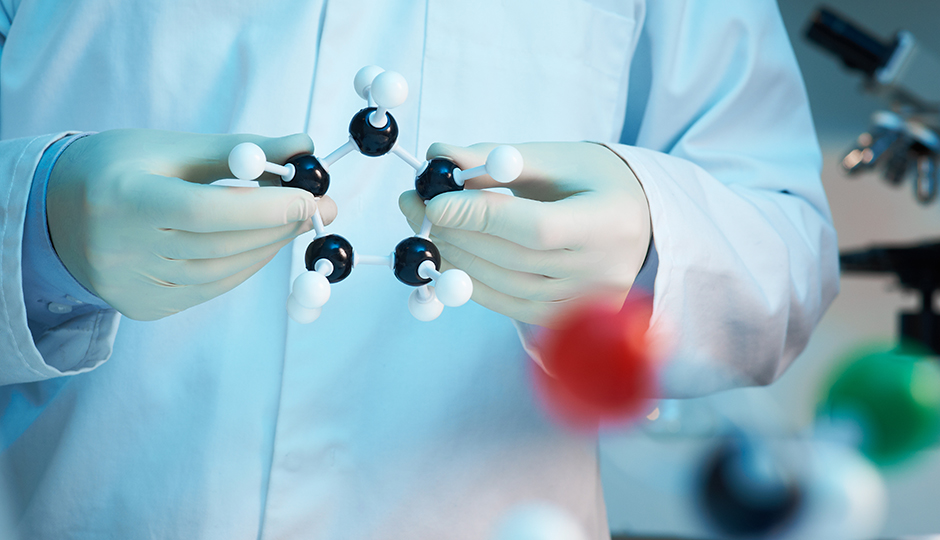The development of alternative power sources has become a crucial issue of research and development. One of the main goals in this quest is the reduction of emission of greenhouse gases (GHG) like carbon dioxide. The fuel cell technology continues to be promising as a mean to increase the effectiveness of use of current fuels and appears to be very promising as power supplies for automotive, portable or stationary applications. Canada has established a leading position in the area of fuel cells, focusing either on hydrogen or liquid rich-hydrogen such as methanol or ethanol. The emergence of fuel cells could carry out to full term a significant reduction of the gas emission with GHG effect, and contribute to the national targets of reduction of 20% by 2020 and 60-70% by 2050.
The technology of PEMFCs uses a membrane of the Nafion® type covered with a platinum catalyst. PEMFCs must however proof their technological and economic viability, respectively conditioned by their level of operation and their cost which must both be compatible with the requirements of the industrial specifications as well for their realization as for their use. That requires the lifting of barriers in particular on the level of the MEAs (Membrane Electrodes Assemblies), which constitute the heart of the cell. Concerning the economic aspect, the cost constitutes a first barrier to the marketing of this technology. Platinum, the single possible catalyst candidate for the current systems is the expensive station and its contribution will be increasing with the scale effect because of limited reserves. Therefore, the future of fuel cells technologies is strictly dependent on the availability of optimized synthesis routes that allow tailor-designing, architecturing and manipulation of catalysts in a precise manner to enhance particular functional properties principally when they are combined with other functional materials.
Objectives
This research project has as ambition to help with the deployment of PEMFCs by proposing the development of new MEA concepts and materials powerful and durable for the future generations of fuel cells by their potential scopes of application in the car or portable electronics. Specifically, the target is a reduction of a factor of 8 or 10 of the quantity of platinum per unit of power, is the passage of a state of the art to 1 g/kW with a solution with 0.125 or 0.1 g/kW. This can be achieved by decreasing the size of the particles and by controlling the microstructure of the catalyst layer. This new manufacturing method will increase the specific surface area available of the catalyst while decreasing the total mass (and thus its cost) of platinum deposited on the substrate.
Major Results
First, we introduced plasmas techniques such as the pulsed laser deposition (PLD) method as novel route for the preparation of nanocatalysts and energy materials. Indeed, not only the nanocatalysts created by the plasmas showed higher dispersion (smaller size), improved catalytic properties (like better activity, improved utilization ratio of noble metal, enhanced durability), the PLD technique allowed ultra-low deposition of noble catalyst(up to 0.12 mg/cm2).
Second, we have designed, fabricated and investigated an innovative concept of free-standing (binderless: no nafion ionomer and no other polymeric binders) nanostructured catalyst layers for fuel cells applications. The fabricated catalyst layer contained a carbon paper substrate (current collector), carbon nanotubes, CNTs (catalyst support) and the electrocatalyst. The Pt (model catalyst) film was synthesized in the form of well-spread nanoparticles (NPs) to thin films of nanometric thicknesses ranging from 2 to 50 nm. The electrochemical characterizations of such structures showed that the catalytic activity of binderless Pt/CNTs towards methanol oxidation depends strongly on the surface morphology of Pt. Platinum Nps organized into columns displayed the highest electrocatalytic activity. This performance is considered to be related to the increased porosity (high surface area) and to the columnar arrangement of the Pt NPs, which provide better accessibility to the electrolyte and by that better utilization. Importantly, our binderless Pt/CNT electrodes displayed current mass activities of 4.77 times higher than commercial-Nafion containing electrodes. It was concluded that the reduced thickness of the Pt catalyst film in our electrodes provides short conduction distances alleviating by that the need for a protonconducting medium.
Third, in the search of new catalysts and structures for the electrooxidation of ethanol (fuel that can be produced from biological sources), we have adapted and optimised the PLD technique to synthesize several Pt-based catalysts (PtRu, PtRh, PtSn..). A major discovery we have made, is the creation of PtSn nanoparticles which assemble onto CNTs into fascinating cauliflower-like arrangements. This 3D hierarchical cauliflower-like CNTs/PtSn nanostructure exhibited an enhanced electrocatalytic activity and high durability towards ethanol oxidation, compared to other catalysts reported in the literature. Factors contributing to the improved performance obtained with the 3D CNT/PtSn material are due to the highly open structure of the PtSn catalyst synthesized under high pressure of Helium.
Current and projected impacts
This project has generated several scientific publications, presentations at international conferences on the impact of the platinum morphology and loadings on properties, performances and durability, and on the outstanding performance of the free-standing (binderless) catalyst layers compared to the state of the art. In addition, the prospective use of biomass generated fuels such as ethanol has attracted the interest of the Media.
The innovation and research tasks carried out in this project can help with the deployment of the biomasses (bioethanol) route and the technology of fuel cells by helping these alternative solutions to become competitive with respect to the existing solutions.
The direct valorization in terms of technical and industrial benefits could include the transfer of inventions, but also the exploitation of know-how that emerged from this project. In the medium term, the exploitation of these results by industrial sector should contribute to the market deployment of low temperature fuel cells.
Chercheur principal : Mohamed Mohamedi, Institut national de la recherche scientifique
Titre original : Nouveaux concepts et matériaux pour les futures générations de piles à combustible




